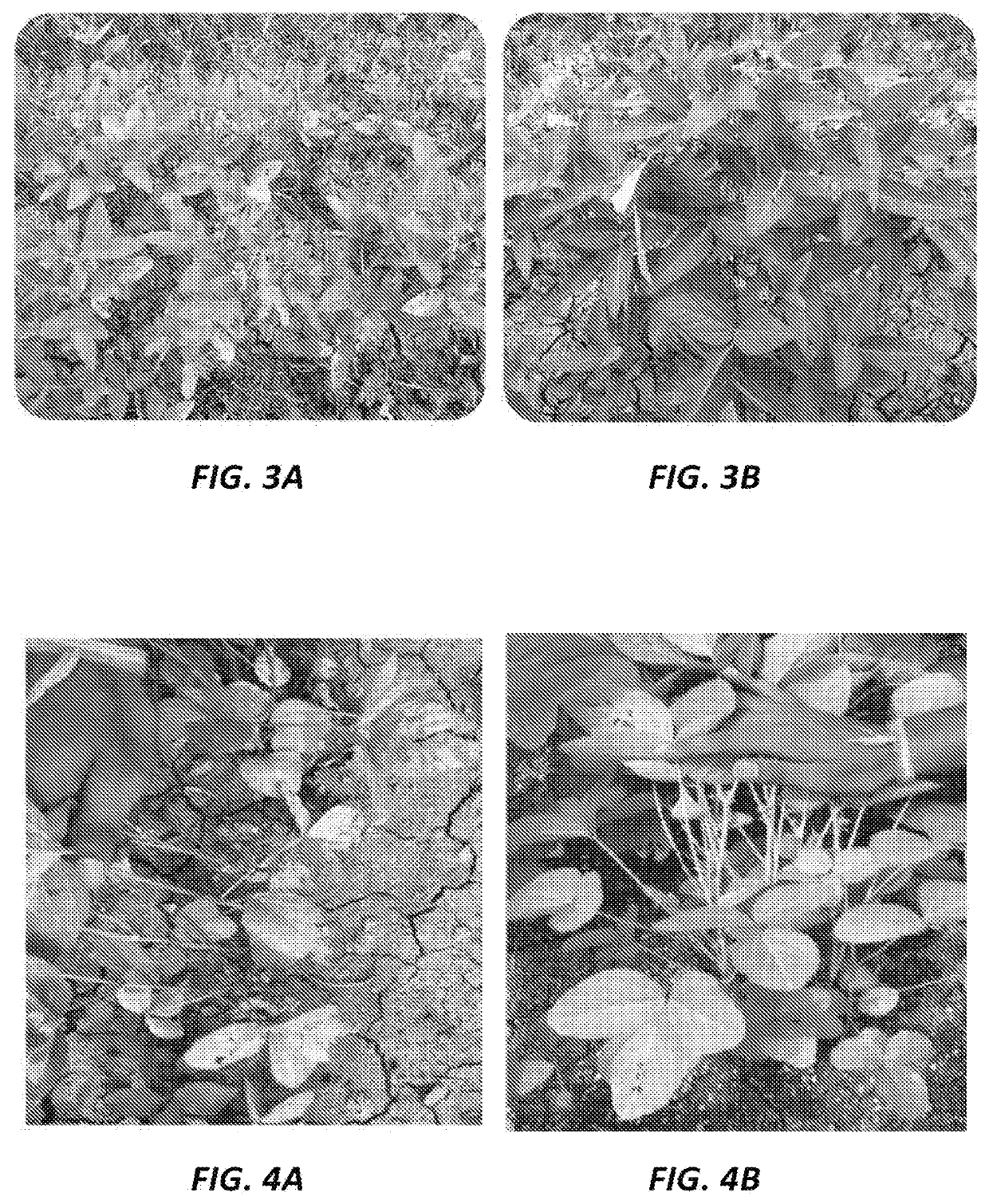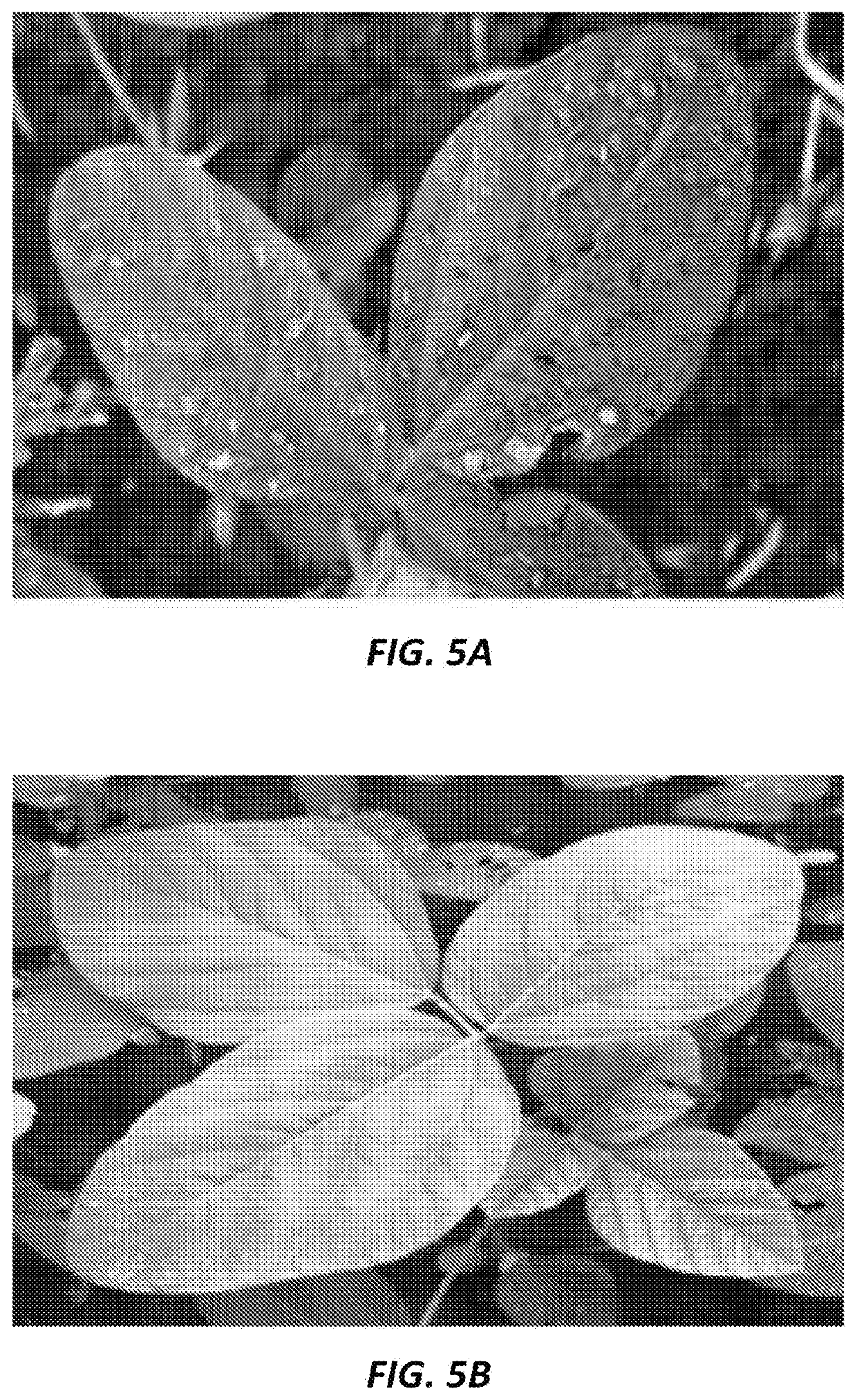Compositions and Methods for Reducing Pesticide-Induced Plant Damage and Improving Plant Yield
a technology of pesticide-induced plant damage and composition, applied in the field of agricultural management, can solve the problems of increasing crop yield, reducing disease, and many problems of using conventional synthetic crop protection products, and achieve the effects of reducing chemical pesticide-induced plant damage, improving plant yield, and enhancing plant health
- Summary
- Abstract
- Description
- Claims
- Application Information
AI Technical Summary
Benefits of technology
Problems solved by technology
Method used
Image
Examples
example 1
[0178]To test the effect of foliar application of an inventive fermentation culture lysate composition (biostimulant) on soybean plants (soybean variety: ‘JS 9560’) stressed by foliar application of the chemical herbicides acifluorfen and clodinafop, over time, various field trial(s) were conducted. See FIGS. 1A-5B. Control fields (FIGS. 1A, 2A, 3A, 4A, 5A) were treated with herbicide formulation comprising acifluorfen and clodinafop (1000 ml / ha). Test fields (FIGS. 1B, 2B, 3B, 4B, 5B) were treated with a combination of the herbicide formulation comprising acifluorfen and clodinafop (1000 ml / ha) and fermentation culture lysate Composition B (foliar application at 625 ml / ha). Where indicated, a second application of Composition B (foliar application at 625 ml / ha) was applied.
[0179]As illustrated in FIGS. 1A and 1B, foliar application of fermentation culture lysate Composition B, in combination with herbicide formulation comprising acifluorfen and clodinafop (FIG. 1B) provided compara...
example 2
[0185]To test the effect of seed application of an inventive fermentation culture lysate composition on rice seedlings stressed by post-emergence application of the chemical herbicide halosulfuron, various field trial(s) were conducted. See FIGS. 6A-7B. Control fields (FIGS. 6A, 7A) were treated with herbicide formulation comprising halosulfuron (post-emergence at 1800 ml / ha). Test fields (FIGS. 6B, 7B) included seedling treated with the herbicide formulation comprising halosulfuron (post-emergence at 1800 ml / ha) from seeds treated with fermentation culture lysate Composition E (seed treatment at 150 ml / 100 kg seed) during planting.
[0186]As illustrated in FIGS. 6A and 6B, under field conditions, application of fermentation culture lysate Composition E to rice seed during planting (FIG. 6B) improved seedling vigor compared to post-emergence application of halosulfuron alone (FIG. 6A). As illustrated in FIGS. 7A and 7B, post-emergence application of halosulfuron caused bleaching of (u...
example 3
[0188]To test the effect of foliar application of an inventive fermentation culture lysate composition on rice plants stressed by foliar application of the chemical herbicide propanil, field trial(s) were conducted. See FIGS. 8-9B. Control fields (FIG. 8, A; FIG. 9A) were treated with herbicide formulation comprising propanil (foliar application at 4000 ml / ha). Test fields (FIG. 8, B; FIG. 9B) were treated with a combination of the herbicide formulation comprising propanil (foliar application at 4000 ml / ha) and fermentation culture lysate Composition B (foliar application at 500 ml / ha).
[0189]As illustrated in FIG. 9A, rice plants sprayed with propanil showed phytotoxicity symptoms three days after application. Foliar co-application of fermentation culture lysate Composition B with propanil (FIG. 9B) reduced phytotoxicity by 23% (FIG. 8, B), as compared to treatment with propanil alone (FIG. 8, A).
[0190]Thus, application of bacterial fermentation composition, in accordance with the p...
PUM
 Login to View More
Login to View More Abstract
Description
Claims
Application Information
 Login to View More
Login to View More - R&D
- Intellectual Property
- Life Sciences
- Materials
- Tech Scout
- Unparalleled Data Quality
- Higher Quality Content
- 60% Fewer Hallucinations
Browse by: Latest US Patents, China's latest patents, Technical Efficacy Thesaurus, Application Domain, Technology Topic, Popular Technical Reports.
© 2025 PatSnap. All rights reserved.Legal|Privacy policy|Modern Slavery Act Transparency Statement|Sitemap|About US| Contact US: help@patsnap.com



